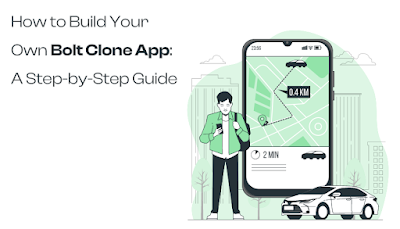Building your own Bolt clone app involves several key steps, from conceptualization to deployment. Here's a step-by-step guide to help you create a ride-hailing app similar to Bolt:
Market Research and Planning
Conduct thorough market research to understand the demand, competition, and user expectations in the ride-hailing industry. Identify unique features that can set your app apart. Plan the app's features, target audience, and business model.
Define Core Features
List the essential features required for your Bolt clone app. It includes user registration, ride booking, driver allocation, real-time tracking, secure payment processing, and a feedback system. Consider additional features like promotional offers and loyalty programs.
Choose a Tech Stack
Select the appropriate technology stack for your app, including programming languages, frameworks, and databases. Popular choices for ride-hailing apps include technologies like React Native or Flutter for cross-platform development, Node.js or Django for backend development, and MongoDB or MySQL for databases.
Design the User Interface (UI/UX)
Create an intuitive and user-friendly interface for both the rider and driver apps. Prioritize simplicity and ease of use.
Develop the Backend
Build a robust backend system to handle user authentication, ride-matching algorithms, GPS tracking, and payment processing. Implement secure APIs for seamless communication between the front end and back end.
Integrate GPS and Mapping Services
Utilize GPS technology to enable real-time tracking and location-based services. Integrate mapping services, such as Google Maps or Mapbox, to provide accurate navigation for riders and drivers.
Implement Ride Matching Algorithm
Develop an efficient algorithm to match riders with nearby drivers based on factors like location, availability, and ride preferences. It ensures quick and reliable service for users.
Payment Gateway Integration
Support various payment methods, including credit/debit cards, mobile wallets, and other digital payment options.
Testing
Conduct thorough testing to identify and rectify bugs and performance issues. Perform user acceptance testing (UAT) to ensure that the app meets user expectations.
Launch and Marketing
Deploy the app on app stores (Google Play Store, Apple App Store) after testing. Implement a marketing strategy to promote the app and attract users. Consider offering promotional discounts or referral programs to encourage adoption.
Monitor and Update
Regularly monitor the app's performance, gather user feedback, and make necessary updates. Stay informed about market trends and technological advancements to enhance your app's features.
By following these steps, you can create a Bolt clone app that provides a seamless and reliable ride-hailing experience for users and drivers alike. Keep user satisfaction in mind and be ready to adapt your app based on market feedback and emerging trends.





No comments:
Post a Comment